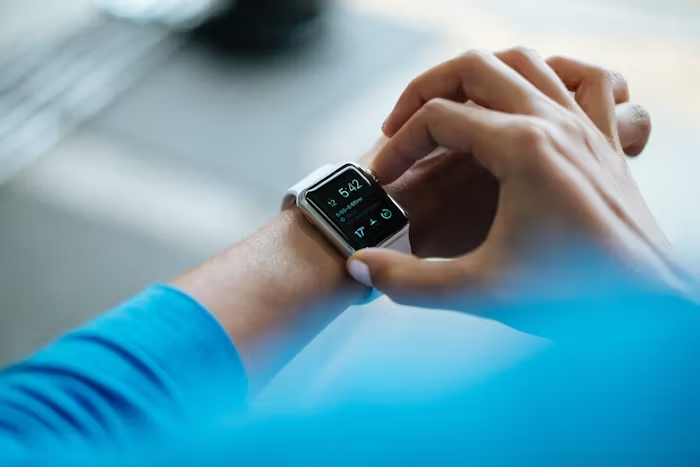In a world increasingly driven by technological innovation, wearable technology is emerging as a game-changer in healthcare. From fitness trackers to advanced medical devices, these gadgets are transforming how we monitor, understand, and optimize our health. This article explores the incredible ways wearable tech is shaping the future of wellness, why it matters, and what’s next in this fast-evolving industry.
Introduction: The Rise of Wearable Tech in Healthcare
Wearable technology has come a long way from simple pedometers and heart rate monitors. Today, it encompasses a wide range of devices, including smartwatches, biosensors, and even clothing embedded with microchips. According to recent studies, the global wearable medical device market is projected to reach $195.57 billion by 2027, driven by increasing consumer awareness and advancements in artificial intelligence (AI) and the Internet of Things (IoT).
The question is: why are wearables so transformative? The answer lies in their ability to seamlessly integrate into our daily lives while providing real-time, actionable health data.

Why Wearable Tech Matters: Key Benefits for Health
1. Personalized Health Monitoring
Gone are the days when health monitoring was confined to annual checkups. Wearable tech empowers individuals to track vital signs daily, from heart rate and blood pressure to oxygen saturation and sleep patterns. Devices like Fitbit, Apple Watch, and Garmin smartwatches provide users with detailed insights into their health, helping them make informed decisions.
Personalized data is particularly valuable for individuals with chronic conditions. For instance:
- Diabetes management: Continuous glucose monitors (CGMs) like Dexcom and Freestyle Libre help diabetics track their blood sugar levels in real-time.
- Cardiac health: Devices such as KardiaMobile provide EKG readings, helping users detect irregular heart rhythms early.
2. Early Detection and Prevention
One of the most significant contributions of wearable tech is its ability to detect health anomalies before they become severe. These gadgets leverage AI and machine learning to analyze patterns and provide early warnings. For example:
- Smartwatches equipped with fall detection can alert emergency services if a user experiences a hard fall.
- Biosensors can monitor stress levels, prompting users to take proactive steps to manage mental health.
Early intervention saves lives and reduces healthcare costs, making wearable tech indispensable.
3. Fitness and Wellness Motivation
Fitness trackers have revolutionized how we approach exercise and nutrition. By gamifying fitness goals, these devices motivate users to stay active. Features like step counting, calorie tracking, and goal reminders keep users accountable, fostering a culture of healthy living.
For instance:
- Gamification in apps like Strava and Fitbit allows users to compete with friends, creating a sense of community.
- Wearables with mindfulness apps, such as meditation reminders, help reduce stress and promote mental well-being.
How Wearables Are Changing the Healthcare Landscape
1. Remote Patient Monitoring (RPM)
Wearable devices are enabling healthcare providers to monitor patients remotely, reducing the need for frequent hospital visits. RPM is particularly beneficial for:
- Post-surgical recovery, where doctors can track vitals without requiring patients to leave home.
- Elderly care, providing peace of mind to caregivers by tracking vital signs and mobility.
Telehealth, combined with wearable tech, is proving to be a game-changer, especially in rural areas where access to healthcare is limited.
2. Data-Driven Insights for Doctors
Wearable tech doesn’t just benefit users; it also provides valuable insights to healthcare providers. By aggregating real-time data, doctors can make more accurate diagnoses and create customized treatment plans.
For example:
- Patients with heart disease can share EKG data directly with their cardiologists, enabling timely interventions.
- AI-powered wearables can identify irregular patterns that may go unnoticed in traditional checkups.
3. Empowering Preventive Healthcare
With the rise of wearable tech, healthcare is shifting from a reactive to a proactive model. Users are no longer passive participants; they are taking charge of their health, armed with data and insights. Preventive healthcare reduces the burden on medical systems and improves quality of life.
Innovative Wearable Tech: What’s Next?
The future of wearable tech is both exciting and promising. Here are some cutting-edge innovations on the horizon:
1. Smart Clothing and Implantables
Imagine wearing a T-shirt that monitors your heart rate or contact lenses that measure blood sugar levels. Companies like Hexoskin and Google are already working on integrating sensors into everyday items. These advancements blur the line between technology and the human body.
2. AI-Driven Health Predictions
AI-powered algorithms are becoming more sophisticated, enabling wearables to predict potential health issues with greater accuracy. Future devices may be able to forecast migraines, detect infections, or even warn of potential strokes days in advance.
3. Mental Health Wearables
As mental health becomes a global priority, wearables are evolving to address this critical area. Devices like Muse and Apollo Neuro focus on stress reduction, anxiety management, and improved sleep through neurofeedback and vibration therapy.
Challenges and Ethical Considerations
While the potential of wearable tech is immense, it’s not without challenges:
- Data Privacy: With sensitive health data being collected, ensuring privacy and security is paramount. Companies must adhere to stringent data protection regulations.
- Accessibility: High costs may limit access for lower-income populations. Ensuring affordability will be key to widespread adoption.
- Reliability: While wearables are improving, inaccuracies in data can lead to misdiagnoses or unnecessary stress.
Addressing these challenges requires collaboration between tech companies, healthcare providers, and regulators.
The Role of Wearable Tech in a Post-Pandemic World
The COVID-19 pandemic highlighted the importance of remote healthcare solutions. Wearable devices played a crucial role in monitoring symptoms, tracking exposure, and ensuring public safety. Post-pandemic, their role has only expanded, with a focus on long-term health monitoring and chronic disease management.
For instance:
- Wearables with SpO2 sensors became essential during the pandemic to track oxygen levels in COVID-19 patients.
- Post-pandemic, these devices continue to help monitor respiratory health and detect early signs of infection.
Wearable technology is more than a trend; it’s a revolution reshaping the healthcare landscape. By putting health data directly into users’ hands, these devices empower individuals to take control of their well-being. From personalized monitoring and early detection to preventive care and fitness motivation, the benefits are undeniable.
As technology continues to advance, the possibilities are limitless. The integration of AI, IoT, and wearable tech promises a future where healthcare is more accessible, personalized, and proactive. However, for this future to be inclusive and effective, ethical considerations like data privacy and affordability must be prioritized.
In the end, wearable tech isn’t just about gadgets — it’s about transforming lives. As we embrace this technology, one thing is clear: the future of health is wearable.














